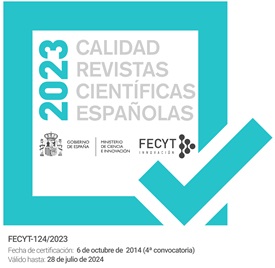Debe aparecer al final del texto, ordenada alfabéticamente por el apellido de los autores. Las referencias respetarán el formato de los ejemplos siguientes (en otros casos debe emplearse el estilo de referencia bibliográfica de la American Psychological Association):
Edwards, J.R., Dean, G., & Clarke, F. (2009). Merchants’ accounts, performance assessment and decision making in mercantilist Britain. Accounting, Organizations and Society, 34(5), 551-570.
Laplace, P. S. (1951). A philosophical essay on probabilities (Trads., F. W. Truscott y F. L. Emory). New York: McGraw-Hill. (Trabajo original publicado en 1814).
MacKenzie, D. (en prensa). Making things the same: Gases, emission rights and the politics of carbon markets. Accounting, Organizations and Society. doi:10.1016/j.aos.2008.02.004 (o http://dx.doi.org/10.1016/j.aos.2008.02.004).
Powell, W.W. (1991). Expanding the scope of institutional analysis. En W.W. Powell and P.J. DiMaggio (Eds.), The new institutionalism in organizational analysis (pp. 183-203). Chicago: The University of Chicago Press.
Scott, W.R. (1995). Institutions and Organizations. Thousand Oaks, California: Sage.
Se recomienda usar el Digital Object Identifier (DOI) para citar y enlazar documentos electrónicos. El DOI se compone de una cadena de caracteres alfa-numéricos único que se asigna a un documento por el editor de la publicación electrónica inicial. Puesto que nunca cambia, es un medio ideal para citar un documento, en particular “los artículos en prensa”, de los que puede no disponerse de información bibliográfica completa. Se prefiere el formato URL. Es decir, que el documento sea citado como http://dx.doi.org/10.1016/j.rcsar.2015.01.001 en lugar de como doi:10.1016/j.rcsar.2015.01.001.





